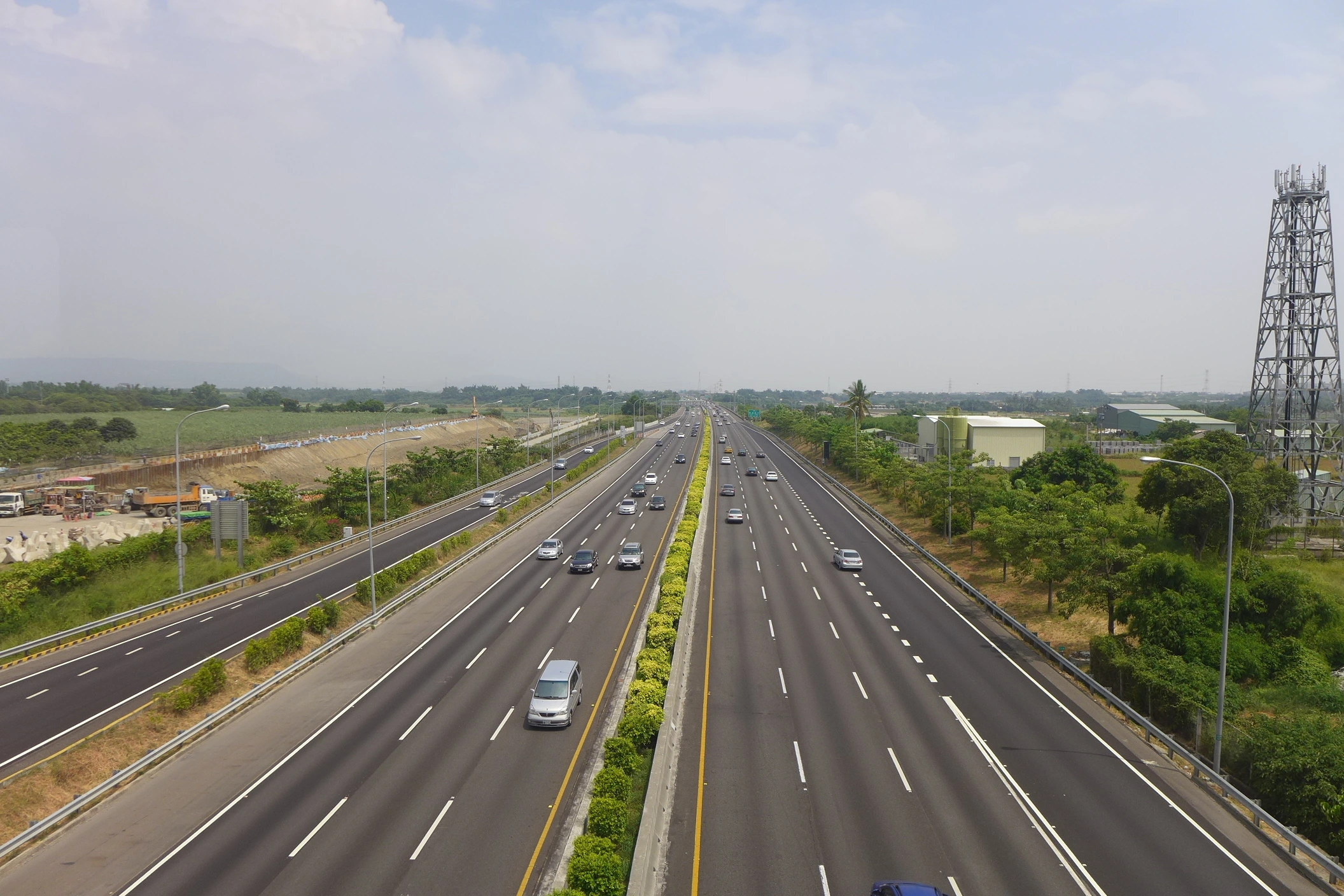“Life is a journey, not a destination,” they say. But when you find yourself on NH19, formerly NH2, that phrase takes on a whole new meaning. This stretch of road, once known as the Grand Trunk Road, has been more than just a route—it’s a lifeline, a storybook, and a silent witness to centuries of history. It’s the very road where, every three weeks, a merchant from Kabul would journey with his caravan laden with precious stones, spices and silk, all bound for the bustling markets of Bengal.
This was once Sher Shah Suri’s ‘Shahrah-i-Azim,’ the Mughals’ grand ‘Badshahi Road,’ Kipling’s ‘river of life’ immortalized in his classic Kim, and the English-named Grand Trunk Road, linking Eastern India to what is now Pakistan and Afghanistan. It’s also a vital part of the 20,000-kilometer-long Asian Highway 1 (AH1), stretching from Japan to Turkey. All these identities converge on this ancient route, bearing the footprints of countless travellers, each with its own story to tell.
Today, as the sun sets over this 2,500-year-old, 2,500-kilometer stretch, it’s easy to overlook that beneath the modern facade of this road lies the soul of Asia’s oldest highway. Whether you’re booking a cab from Delhi to Agra to marvel at the Taj Mahal or heading from Kolkata to Dakshineswar to soak in spiritual serenity, remember that this road carries the echoes of generations past. For over 17 years, Savaari has journeyed along this historic route, gathering stories from the road’s rich history, from our drivers, passengers, and the people we’ve met along the way. Join us as we share stories that made this route and a perfect road trip itinerary that reconnects with the echoes of those who have walked before us.
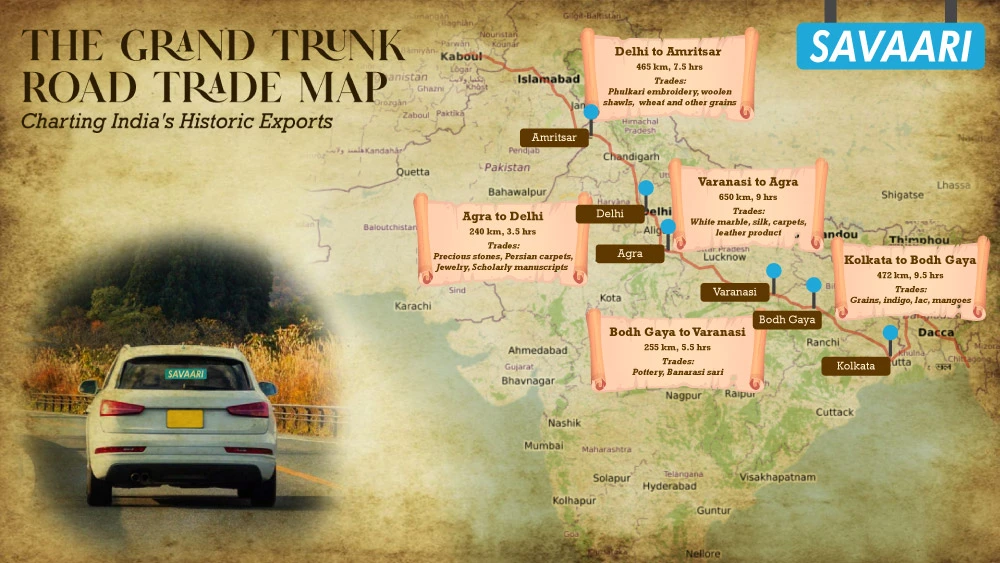
The Grand Trunk Road – Asia’s ancient lifeline
The Grand Trunk Road, previously known by names such as Uttarapath, Sarak-e-Azam, Shah Rah-e-Azam, Badshahi Sarak, and Long Walk, is one of the oldest and longest major roads in Asia. For over 2,500 years, this historic route has connected Central Asia to the Indian subcontinent. Spanning approximately 3,655 kilometers (2,271 miles), the road stretches from Teknaf, Bangladesh, near the Myanmar border, all the way to Kabul, Afghanistan, passing through significant cities like Chittagong, Dhaka, Kolkata, Kanpur, Agra, Aligarh, Delhi, Amritsar, Lahore, Rawalpindi, and Peshawar.
Uttarapath – The Grand Truck Road before time
Even before the rise of the Maurya Empire, ancient Buddhist literature and Indian epics like the Mahabharata referenced the existence of a road called Uttarapath, or the “Northern Road.” This early version of the Grand Trunk Road served as a crucial link between the eastern regions of India and Central Asia, connecting to the terminus of the Khorasan Road.
The Mauryan Legacy – A road of empire
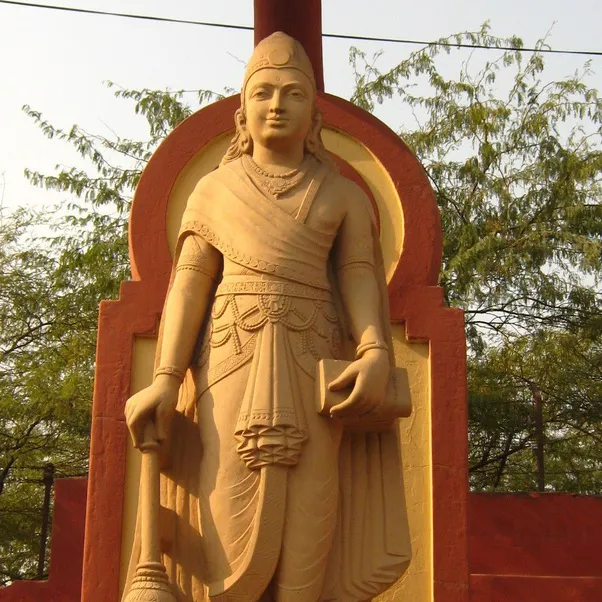
The modern precursor of the Grand Trunk Road was constructed under the orders of Emperor Chandragupta Maurya, inspired by the Persian Royal Road, particularly its eastern extension, the Great Khurasan Road. During the 3rd century BCE, this road facilitated overland trade between India and Western Asia through key cities like Takshashila and Purushapura (now Taxila and Peshawar). The Mauryas maintained this ancient highway, stretching from Takshashila to Patliputra (modern-day Patna). It was also once used by Alexander the Great. Chandragupta Maurya had a whole army of officials overseeing the maintenance of this road as told by Greek diplomat Megasthenes who spent fifteen years at the Mauryan Court. Spanning approximately 2,600 kilometers (1,600 miles), this road connected major cities, providing a vital artery for trade and communication.
From Uttarapath to Shahrah-i-Azim – A royal journey
Chandragupta Maurya’s road was built over the ancient Uttarapath, an essential route mentioned by the scholar Pāṇini. Emperor Ashoka later enhanced the road, planting trees, building wells, and constructing rest-houses, or “nimisdhayas,” for travelers along the route. The Kushan emperor Kanishka also exerted control over this vital road, further establishing its importance in connecting the subcontinent.
The Suri and Mughal empires – Reviving the Grand Route
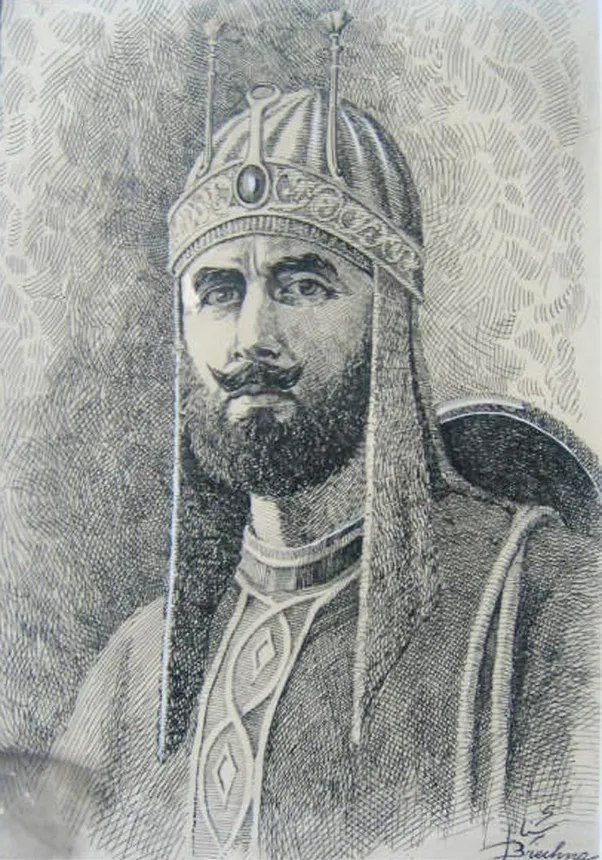
In the 16th century, Sher Shah Suri, the ruler of the Sur Empire (an empire established by a Muslim dynasty of Afghan origin), undertook extensive repairs of Chandragupta’s Royal Road. He rerouted sections of the road, particularly at Sonargaon and Rohtas, widened it, and increased the number of rest-houses (sarais), kos minars (milestones), and baolis (stepwells).
Sher Shah’s son, Islam Shah Suri, continued this work, adding more sarais along the route. The Mughals, especially under Jahangir’s reign, further enhanced the road, mandating that all sarais be built from burnt brick and stone, planting broad-leaved trees between Lahore and Agra, and constructing bridges over rivers and streams. The road was known as “Sadak-e-Azam” by the Suris and “Badshahi Sadak” by the Mughals.
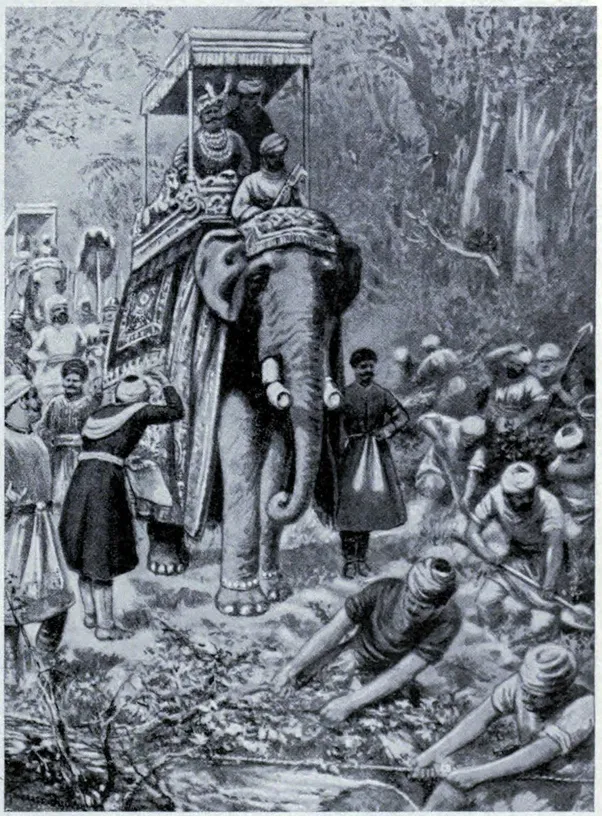
The British era – Modernizing the ancient highway
In the 1830s, the East India Company initiated a program to rebuild and modernize the Grand Trunk Road, then named NH19, for commercial and administrative purposes. The road, stretching from Calcutta through Delhi to Kabul, Afghanistan, was reconstructed at a cost of £1000 per mile. This transformation marked the road’s evolution from a historic trade route to a modern highway.
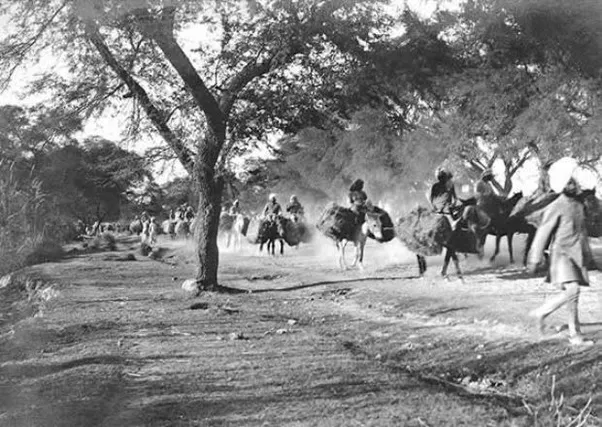
The Grand Trunk Road built by several rulers over centuries, including Sher Shah Suri, has played a significant role in connecting various regions of the Indian subcontinent. It has left an indelible mark on literature, notably in the works of Foster and Rudyard Kipling. Kipling described the road as: “Look! Look again! and chumars, bankers and tinkers, barbers and bunnias, pilgrims – and potters – all the world going and coming. It is to me as a river from which I am withdrawn like a log after a flood. And truly the Grand Trunk Road is a wonderful spectacle. It runs straight, bearing without crowding India’s traffic for fifteen hundred miles – such a river of life as nowhere else exists in the world.” Kipling’s evocative imagery encapsulates the road’s significance as a vital artery of life and commerce in India.
Purpose behind the Grand Trunk Road – A lifeline of trade and connection
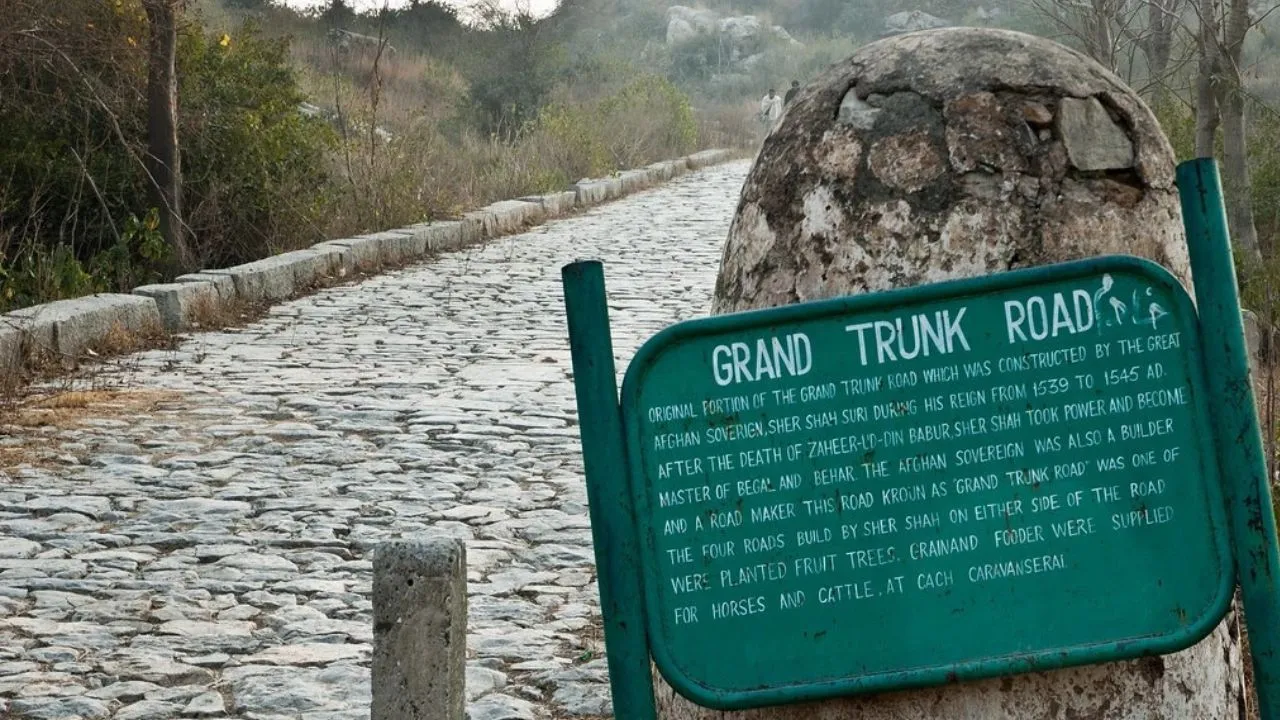
Throughout the centuries, the Grand Trunk Road India served as a crucial trade route, facilitating not only commerce but also travel and postal communication across the region. This ancient track connected various kingdoms and empires, making it a vital artery for traders.
Even today, the Grand Trunk Road India remains an essential part of the transportation network in the Indian subcontinent, with sections of it integrated into the modern national highway system. If you’re wondering Grand Trunk Road connects which cities in India, it links major Indian cities. Today, the road extends from Amritsar to Kolkata, a journey you can easily undertake by booking a Savaari cab. This route takes you through seven Indian states.
A road trip across centuries on the Grand Trunk Road India
At Savaari, our drivers traverse the Grand Trunk Road in India daily, becoming intimate with its rhythms, landscapes, and the cultures that unfold with every city and state they cross. This road, steeped in history and trade, is more than just a route—it’s a living narrative of the Indian subcontinent’s past. Every day, you’ll witness colorful trucks traversing this route, continuing a tradition that spans centuries. Our drivers often share stories of the ever-changing scenery, the architectural marvels, and the diverse traditions that have been preserved and passed down through generations.
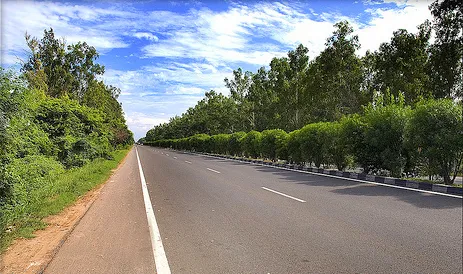
This journey along the Grand Trunk Road India is not just about covering miles; it’s about uncovering the reasons why each location became a vital hub of trade and culture. Each stop on this itinerary offers an experience that connects you with the historical significance of the road. We’ve consulted our drivers, who know these routes better than anyone, to guide you through an immersive experience that echoes the footsteps of merchants, emperors, and travelers who have traversed this ancient highway for over 2,500 years. Let their knowledge and your curiosity lead you on a road trip like no other, where every destination is a doorway to the past, offering glimpses of the vibrant commerce and cultural exchanges that shaped the Grand Trunk Road India into the legendary route it is today.
Starting point – Kolkata – The Gateway to the East
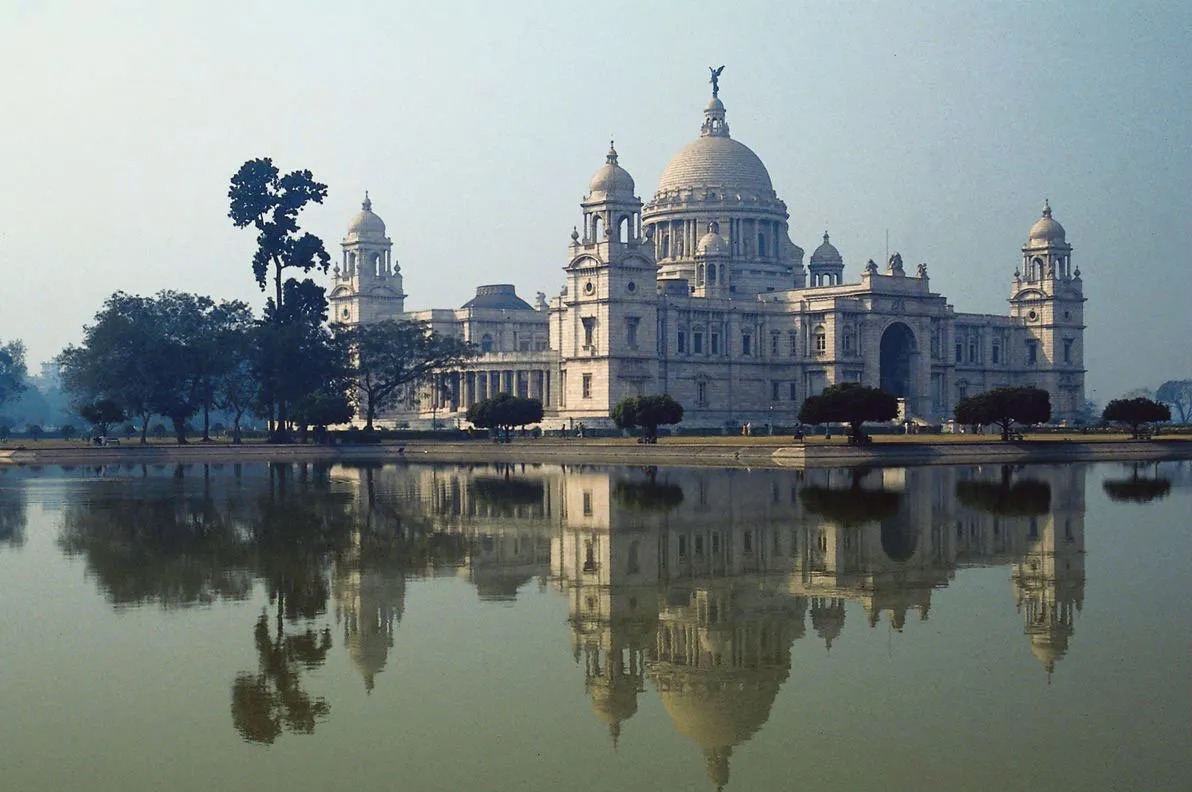
Kolkata, with its rich colonial heritage and vibrant cultural scene, serves as the perfect starting point for your journey along the Grand Trunk Road India. Begin your adventure by booking a reliable cab from Kolkata. Historically known for its bustling trade in jute, tea, silk, rice, and spices, the city is also the epicenter of muslin production—a fabric so fine that it was once referred to as ‘woven air.’ As you cross the Nivedita Setu, with the iconic Kali temple at Dakshineswar to your right, you leave behind the urban sprawl of Kolkata and begin a journey through time, where colonial enclaves like Danish Serampore and French Chandannagar appear, each echoing the city’s storied past.
West Bengal’s textile legacy – Muslin and beyond
West Bengal, particularly the regions around Kolkata, was famous for producing exquisite muslin, a delicate, plain-weave fabric that captivated the world with its fineness. This fabric, so fine it could pass through a ring, was highly sought after during the Mughal era, with special variants like mulmul khas and shahi mulmul made exclusively for the emperor.
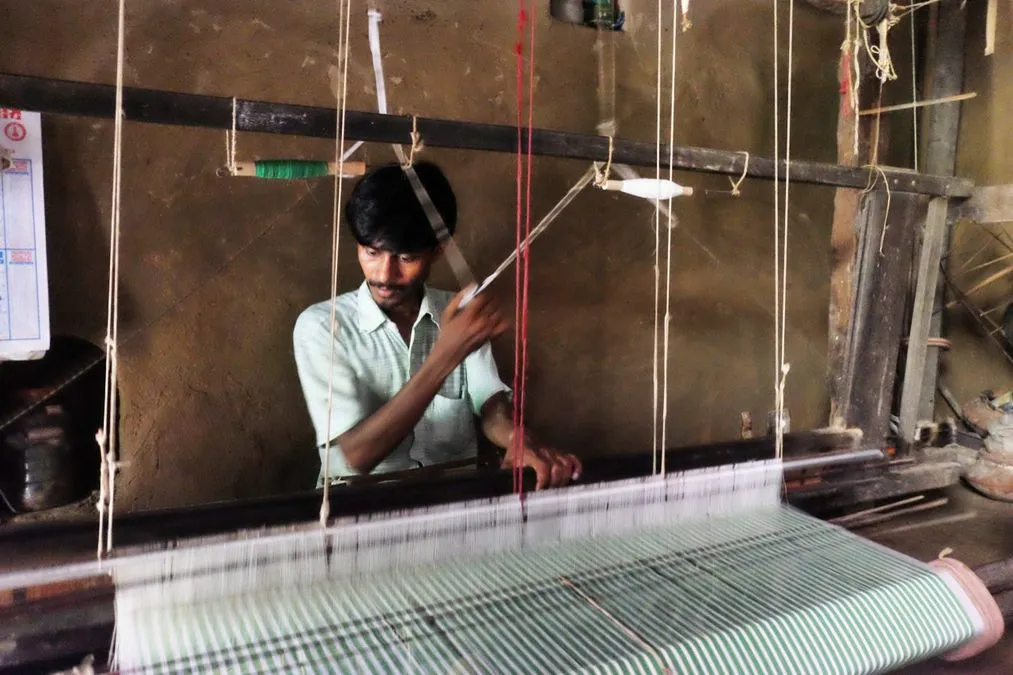
The artisans of Bengal were masters of this craft, producing muslin that was often embellished with intricate jamdani patterns or chikankari embroidery. Although the British colonial impact diminished its value, Bengal’s muslin has seen a resurgence, with production hubs in Nadia and Murshidabad leading the revival.
Relive the Grand Trunk Road trade experience in Kolkata
To truly appreciate the legacy of muslin, visit the handloom clusters in Nadia and Murshidabad. These regions are known for their skilled weavers, many of whom are continuing the tradition of handspun and handwoven cotton fabrics. Production houses in Isanpur and nearby villages have revived the jamdani technique, using eco-friendly dyes and pit looms that are ideal for weaving these delicate fabrics. Here, you can witness the painstaking process that goes into creating this legendary fabric and even purchase authentic muslin directly from the artisans.
Heritage and landscapes – The road from Kolkata to Bodh Gaya
Distance – 9 hr 42 min
Time taken – 472.0 km
As you journey from Kolkata to Bodh Gaya in Bihar, the road offers a blend of challenges and scenic beauty. Frequent repairs, with culverts being restored, often lead to diversions from the elevated highway onto rough, dust-covered tracks, each presenting its own set of trials. As you progress, the landscape begins to shift—palm trees increasingly line the road, and roadside markers switch from miles to kilometers as you approach Bodh Gaya. The route winds through picturesque countryside, with tall palms rising against lush fields, scarlet-flowered trees adding vibrant splashes of color, and brown hills gracefully surrounding the town.
This journey also takes you through a fascinating culinary transition that reflects the diversity of the regions. In Kolkata, you can savor the rich flavors of Macher Jhol, Shukto, Aloo Posto, and Kosha Mangsho. As you enter Bihar, the cuisine changes to include delights like Balushahi, Kadhi Badi, and Litti. Moving closer to Bodh Gaya, Tibetan influences become prominent in the local food, reflecting the town’s significance as a pilgrimage site for Tibetans. Local restaurants serve excellent Tibetan dishes, such as thukpa with mutton momos, with Fujiya being a popular spot to try them. This journey between two states showcases not just a change in scenery but also a rich array of culinary experiences.
Pitstops on the journey from Kolkata to Bodh Gaya
1. Serampore
A short drive from Kolkata, Serampore is a former Danish colony that still retains much of its European charm. The town is a quiet reminder of Bengal’s cosmopolitan past, with its mix of colonial architecture and vibrant local culture. Stroll through its streets to get a sense of the Danish influence that once shaped this part of Bengal.
2. Chandannagar (Chandernagore)
Further along the route, you’ll reach Chandannagar, a former French colony famous for its grand Jagaddhatri Puja and the spectacular immersion rallies that follow. This town offers a unique blend of French and Indian cultures, visible in its architecture and the local festivals. Make sure to visit the Strand, a picturesque riverside promenade that showcases the town’s colonial heritage.
3. Sarbamangala Temple, Bardhaman
Continuing your journey, you’ll arrive in Bardhaman, home to the ancient Sarbamangala Temple. This temple, dedicated to the goddess Sarbamangala, is an important pilgrimage site and a testament to the region’s deep spiritual roots. The town itself has a rich history and serves as a gateway to the agricultural heartland of West Bengal.
4. Kali Temple at Dakshineswar
You might already be familiar with the popular Chinese Kali Mata Temple, but here’s another must-visit Kali temple in Kolkata. Before leaving the Kolkata metropolitan area, make sure to stop by the Kali Temple at Dakshineswar. This iconic temple, renowned for its majestic architecture and deep spiritual significance, provides a peaceful space for reflection before you continue your journey. It also serves as a reminder of the rich cultural and religious diversity that has thrived along the Grand Trunk Road in India.
5. Asansol
As you move further west, you’ll reach Asansol, an industrial town known for its coal mines and steel plants. While it might seem an unlikely stop for a cultural road trip, Asansol offers insights into the region’s industrial history and the role it has played in shaping modern India. It’s also a great place to sample local Bengali cuisine, with its robust flavors and rich traditions.
Bodh Gaya – The sacred heart of enlightenment
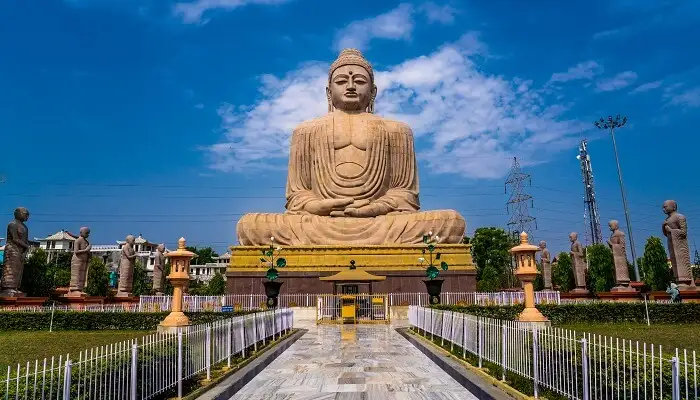
Bodh Gaya, a small town in Bihar, holds immense religious significance as the place where Prince Siddhartha attained enlightenment under a bodhi tree 2,600 years ago, becoming the Buddha. Today, it draws thousands of Buddhist pilgrims from around the world who come for prayer, study, and meditation.
After converting to Buddhism, Emperor Ashoka is believed to have journeyed to Bodh Gaya via routes connected to the Grand Trunk Road. Ashoka played a pivotal role in promoting Buddhism, constructing stupas and pillars at key locations along these routes. The Grand Trunk Road India also served as a vital path for Buddhist monks from various regions, including China, Tibet, and Southeast Asia, who traveled to Bodh Gaya. Renowned travelers like the Chinese monk Xuanzang in the 7th century and Faxian in the 5th century journeyed along this route, documenting their travels and the state of Buddhism in India. When in Bihar, you can embark on the Bihar Buddhist circuit trail, to explore sacred sites and experience profound spiritual serenity in the heart of India.
Commerce and trade in Bihar
Beyond its religious significance, Bihar has long been a hub for trade and commerce. The state’s fertile plains were famous for producing grains, sugarcane, indigo, and textiles. Bihar also traded in lac, a resin used in dyes and adhesives, and was particularly known for its mangoes. Today, Bihar ranks third in India for mango production, yielding approximately 1.58 million metric tons of mangoes. Among these, the Dudhiya Malda variety is celebrated as the “King of Mangoes” in Bihar, known for its exceptional sweetness, distinctive color, rich aroma, abundant pulp, and thin peels and kernels.
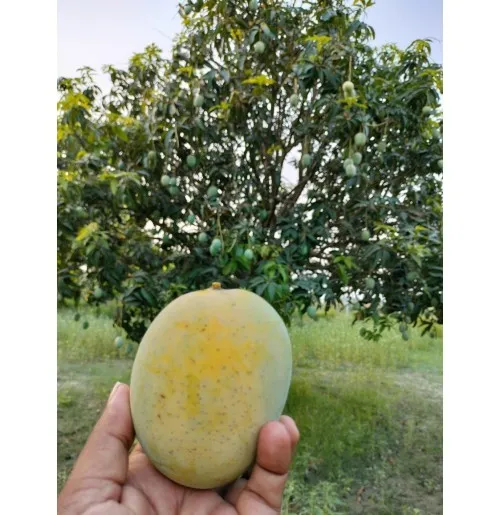
The origin of Dudhiya Malda is rooted in a unique story. It is said that Nawab Fida Hussain of Lucknow brought a mango sapling from the area around Shah Faisal Mosque in Islamabad, Pakistan, and planted it in Digha, Patna. The Nawab, who had a large number of cows, irrigated the plant with leftover milk. When the tree bore fruit, a milk-like substance emerged from the mangoes, giving rise to the name “Dudhiya Malda.”
A mango lover’s delight – Exploring GT road’s sweet heritage
For those eager to experience the unique cultivation of Bihar’s legendary Dudhiya Malda mangoes, a detour to Bihar Vidyapeeth in Patna is highly recommended. Book a Savaari from Patna and make it a day of discovery. This educational institution, founded by Mahatma Gandhi, boasts a 33-acre mango orchard, home to various mango varieties, including Dudhiya Malda. You can also visit Digha in Patna to learn more about this distinctive method of mango cultivation and perhaps take home a carton of these exquisite fruits.
Bodh Gaya to Varanasi – A road of transformation and timelessness
Distance: 255.2 km
Time taken: 5 hr 28 min
The journey from Bodh Gaya to Varanasi is one of transformation, both in landscape and in the richness of cultural history. As you leave the dusty roads and pastoral settings of Bihar behind, you enter the ancient city of Varanasi, where the contrast is remarkable.
“I’ve been driving customers from Bodh Gaya to Varanasi for years, especially those on pilgrimage. Sarnath is a popular stop along the way, and the Grand Trunk Road India has become one of my most frequented routes. The beauty and diversity between these two places are fascinating, and the journey traces the legacy of Buddha alongside the spiritual essence of Varanasi. It’s a route I never tire of, as it’s always interesting for me too.
Sometimes, I also take the alternative route through Jharkhand, which was originally built by Sher Shah Suri. He created this path because it was more concealed and less prone to attacks. Traveling this route feels like a history and geography lesson, and I love sharing that experience with my passengers on this road trip.”
Rakesh Lal, Savaari chauffeur
Pitstops on the GT road journey from Bodh Gaya to Varanasi
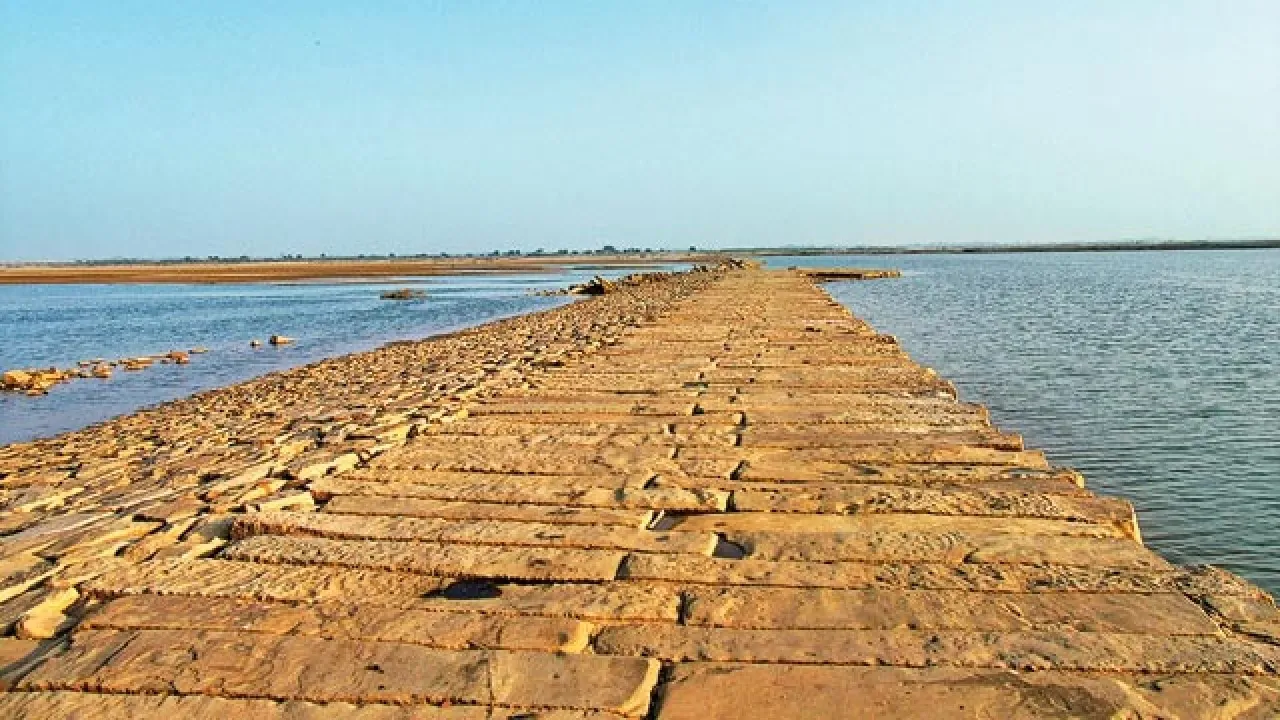
- Rajgir
A historically significant city, Rajgir was the first capital of the Magadha kingdom and a major center of both Buddhism and Jainism. Visit the ancient hot springs, Venuvana, and the Griddhakuta hill where Buddha once meditated. - Nalanda
Home to one of the world’s oldest universities, Nalanda is a must-visit for history enthusiasts. Explore the ruins of the ancient Nalanda University, a UNESCO World Heritage Site, and the Nalanda Archaeological Museum. - Barabar Caves
Located near Gaya, these rock-cut caves are some of the oldest in India and were used by ascetic monks. The caves are known for their beautiful inscriptions and polished stone interiors. - Sasaram
How can you travel this ancient road without paying homage to the man who built it? Sher Shah Suri’s mausoleum at Sasaram is a beautiful monument and sits in the middle of an artificial lake. - Sarnath
Just before reaching Varanasi, make a stop at Sarnath, where Buddha delivered his first sermon after attaining enlightenment. The site includes the Dhamek Stupa and the Sarnath Museum, which houses an impressive collection of Buddhist artifacts.
Varanasi – The city of Ghats and legends
Varanasi, known for its ample ghats lining the Ganges, exudes a timeless mystique that has fascinated travelers for centuries. The famous American writer Mark Twain once said, “Benares is older than history, older than tradition, older even than legend, and looks twice as old as all of them put together!” This quote encapsulates the essence of Varanasi, a city steeped in mystery and history, believed by some to be over 5,000 years old and possibly the oldest continually inhabited city in the world.
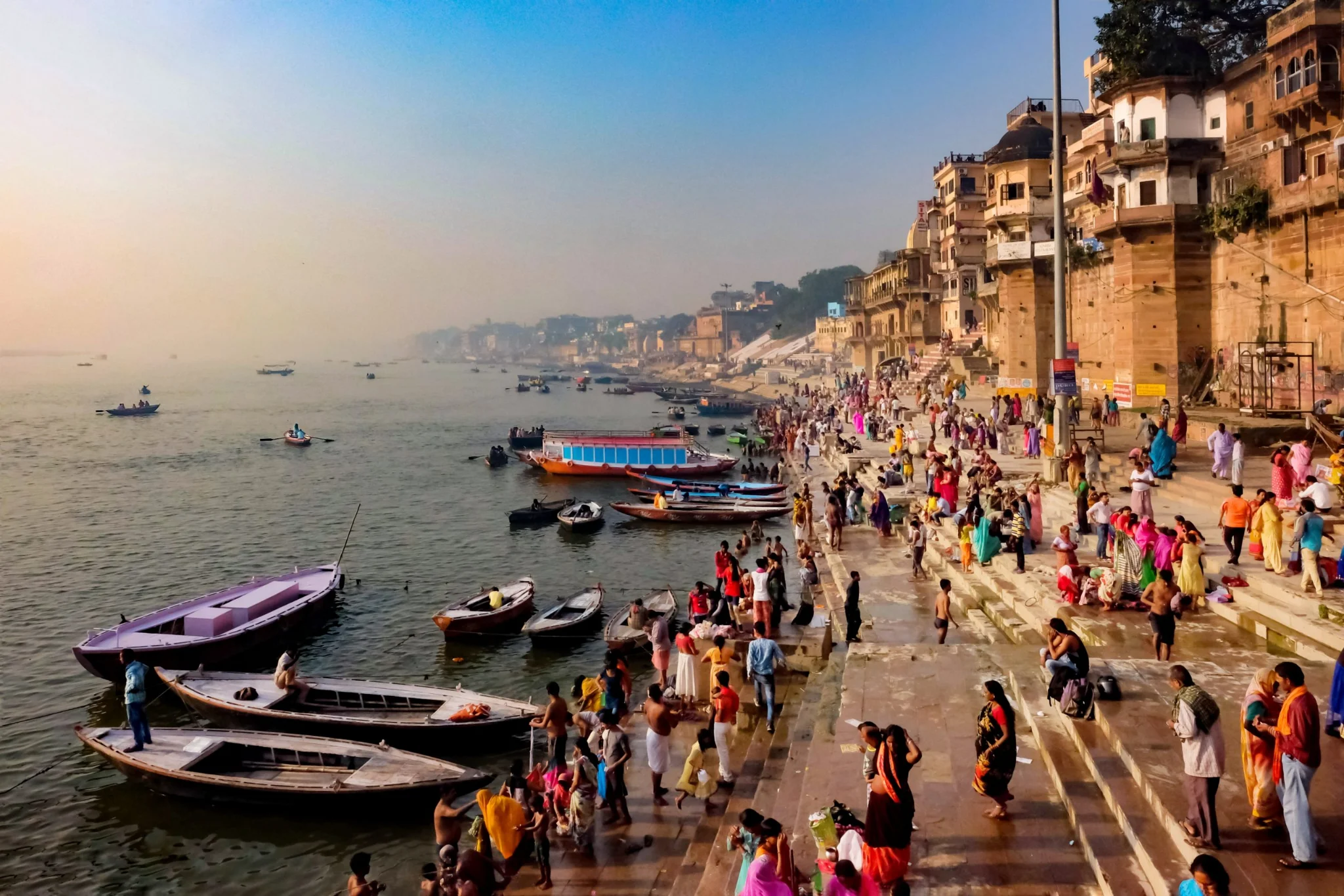
One of the reasons for Varanasi’s long-standing significance as an inhabited city is its effective transport connections with other major cities. Since ancient times, Varanasi has been linked to cities like Taxila, Gazipur, Pataliputra, Vaishali, Ayodhya, Gorakhpur, and Agra. During the Mauryan Empire, a single road connected Taxila to Pataliputra, running through Varanasi.
This road was later renovated and extended by Sher Shah Suri in the 16th century, eventually becoming part of the famous Grand Trunk Road India. Varanasi thrived as a commercial and industrial hub, renowned for its muslin and silk fabrics, perfumes, ivory works, and sculptures. The city also remained a center of religious, educational, and artistic activities, as attested by the Chinese traveler Xuanzang, who noted that the city extended for about 5 kilometers along the western bank of the Ganges.
Trade connections and cultural richness in Varanasi
Varanasi’s strong trade connections extended far beyond its borders. The potters of Varanasi were known to travel regularly to Taxila, carrying heavy loads of pottery. The city also had robust trade relations with Campa, Rajgriha, Mithila, and other cities of Uttarapatha. During the Mughal period in the 14th century, Varanasi became renowned for weaving brocades with intricate designs using gold and silver threads, a speciality that persists to this day. The traditional Banarasi sari, known for its elaborate motifs and generous use of zari (gold or silver thread), remains a highly sought-after item, particularly during India’s wedding season. Despite facing competition from modern power looms, Varanasi’s handloom weavers continue to produce these exquisite saris and preserve this craft.
An immersive experience in Varanasi – Pottery and silk weaving
For a true immersion into Varanasi’s artisanal traditions, visit Bhatti Village, located near the city. Here, you can witness the creation of clay utensils, pots, flower vases, cups, and vessels, all made by hand on a spinning base. The clay is molded with care, dried under the sun, and then baked to perfection. The art of clay doesn’t stop at utensils—families in Bhatti Village also craft clay idols of various gods and deities, continuing a tradition that has been part of Varanasi’s cultural heritage for centuries.
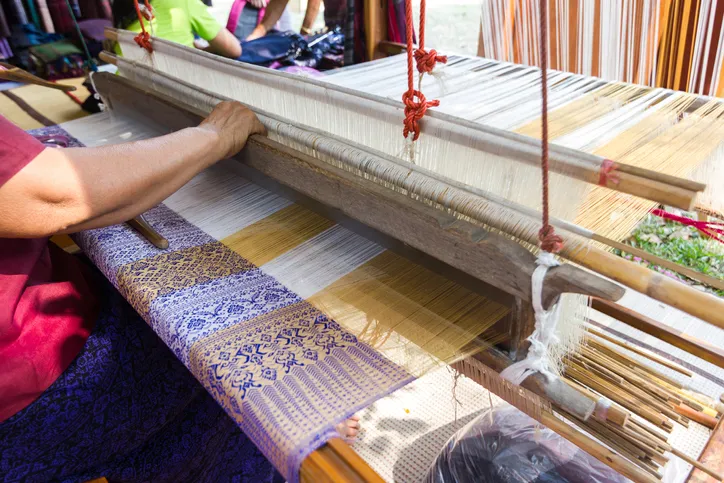
To experience the rich tradition of Banarasi silk weaving, take a stroll through the narrow lanes of the Pili Kothi neighborhood. The rhythmic sounds of looms fill the air as artisans methodically weave intricate patterns into silk saris. Situated in Varanasi’s northeast, Pili Kothi is home to one of the city’s oldest weaving communities. Book a Savaari in Varanasi to explore the place where families have been practising their craft for nearly a century. Despite the challenges posed by modern power looms, these handloom weavers continue to produce the exquisite Banarasi saris that have made Varanasi famous, ensuring that this timeless craft endures for future generations.
Varanasi to Agra – Heritage on the Grand Trunk Road India
Distance: 650 km
Time taken: 9 hr
As you leave the spiritual atmosphere of Varanasi, known for its ghats and temples, the landscape gradually shifts from the sacred banks of the Ganges to the bustling towns and fertile plains of Uttar Pradesh. Along the way, you’ll pass through cities like Allahabad (Prayagraj) and Kanpur, each with its own unique history and flavor. The food transforms as well—from the rich, tangy chaats and kachoris of Varanasi to the creamy kebabs and biryanis of Kanpur, reflecting the Mughal influence that becomes more pronounced as you approach Agra.
By the time you reach Agra, with its iconic Taj Mahal, the journey has taken you through a spectrum of North Indian life, where every stop offers a new experience, a different taste, and a deeper understanding of the region’s heritage.
Places to Visit from Varanasi to Agra via GT road
As you continue your journey from Varanasi to Agra, the Grand Trunk Road India takes you through some of the most culturally and historically significant cities in India.
1. Allahabad (Prayagraj)
Located at the confluence of three sacred rivers—the Ganges, Yamuna, and the mythical Saraswati—Prayagraj is a major pilgrimage site in India. Known as the Triveni Sangam, this confluence is a holy spot where millions of devotees gather during the Kumbh Mela, one of the largest religious festivals in the world. The city also boasts a rich history, with attractions such as the Allahabad Fort and Anand Bhavan, the ancestral home of the Nehru family.
2. Kanpur
Once dubbed the “Manchester of India,” Kanpur was a major center of the textile industry during British rule. Today, the city is famous for its leather works, which are exported worldwide. Kanpur is also home to the prestigious Indian Institute of Technology (IIT), one of the country’s top engineering institutions. Visitors can explore the bustling leather markets and witness the craftsmanship that has made Kanpur’s leather goods renowned across the globe.
Agra – A hub of trade and craftsmanship
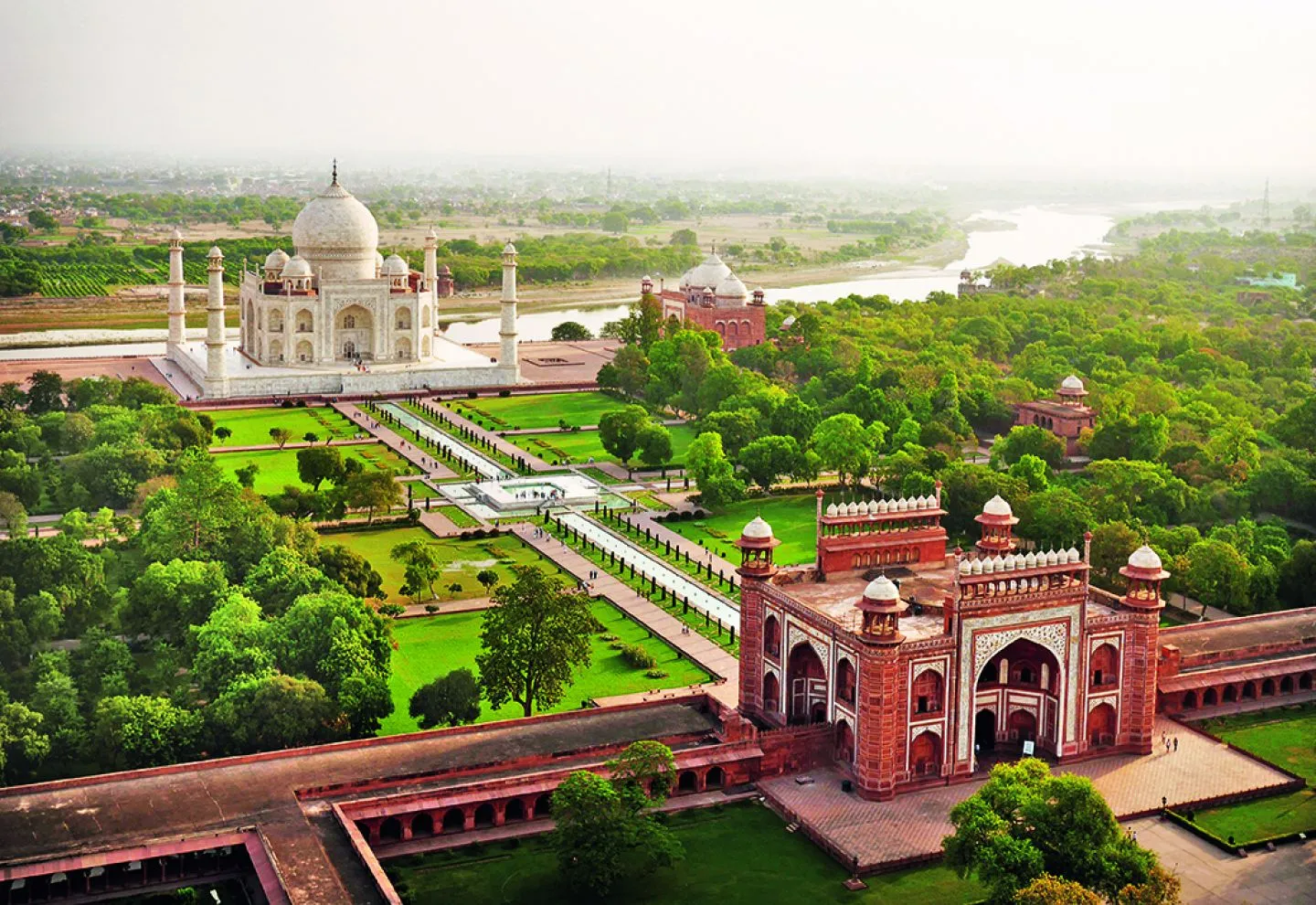
As you arrive in Agra, the historical significance of the Grand Trunk Road India becomes even more apparent. This ancient route played a pivotal role in the logistics and supply chain necessary for the construction of the Taj Mahal, one of the most iconic monuments in the world.
The Grand Trunk Road India was essential in transporting materials, artisans, and laborers from various parts of the Mughal Empire to Agra. The white marble used in the Taj Mahal was quarried from Makrana in Rajasthan and transported via the GT Road. Similarly, the intricate inlay work on the Taj Mahal, involving precious and semi-precious stones from Central Asia, was made possible by this crucial trade route. Skilled artisans and laborers from regions like Persia and Central Asia also traveled along the GT Road to contribute to this monumental project.
Beyond the Taj Mahal, Agra was a thriving center of trade and craftsmanship. The city was renowned for its fine textiles, including silk and brocades, which were highly sought after across the globe. Agra was also known for its intricately designed carpets and rugs, which were exported to Persia, Central Asia, and Europe. High-quality leather products, such as shoes, belts, and saddles, were another specialty of Agra, with a strong demand in Central Asia and the Middle East. Additionally, the city was famous for its exquisite jewelry, featuring inlay work with precious stones that attracted traders from far and wide.
Immersive experiences in Agra – Where to find traditional crafts today
For those eager to experience Agra’s rich heritage of craftsmanship firsthand, there are several key places to visit:
1. Marble Craftsmanship
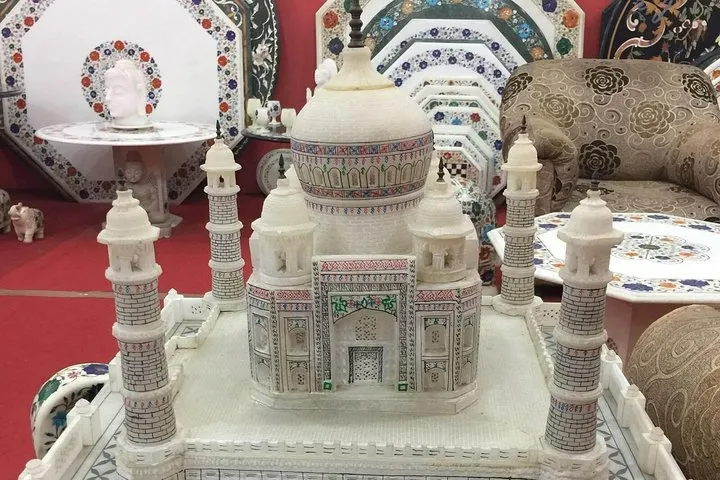
Agra is still famous for its marble craftsmanship, particularly in the form of miniature replicas of the Taj Mahal and other intricate marble inlay work. Visit the marble workshops around the city to see artisans at work and purchase beautifully crafted souvenirs. One popular spot is the Marble Emporium, where you can witness the traditional methods used to create these exquisite pieces.
2. Textiles in Sadar Bazaar
Sadar Bazaar is one of Agra’s busiest and most vibrant markets, offering a wide variety of textiles, including rexine cloth, velvet cloth, and chikankari (a traditional form of embroidery). Here, you can explore the stalls and shops that sell everything from fine silk fabrics to ready-made garments, perfect for anyone looking to take home a piece of Agra’s textile heritage.
3. Leather Goods
Agra’s leather goods are famous for their quality and craftsmanship. The city offers a range of leather products, including shoes, belts, and bags. Kinari Bazaar is a great place to find these items, where you can browse a wide selection of leather goods, often handcrafted using traditional techniques.
4. Jewelry and Inlay Work
For those interested in jewelry, Agra offers a variety of options showcasing the city’s famous inlay work with precious stones. Visit the bustling markets around Kinari Bazaar or head to specialized jewelry stores where you can find stunning pieces that reflect the Mughal-era craftsmanship that made Agra famous.
Agra to Delhi – From Mughal majesty to modern marvels
Distance: 239.8 km
Time taken: 3 hr 38 min
The road trip from Agra to Delhi along the Grand Trunk Road India is a journey through a corridor rich in history and culture. As you leave the majestic city of Agra, home to the iconic Taj Mahal, the landscape gradually transitions from the architectural splendor of Mughal gardens and forts to the bustling urbanity of Delhi.
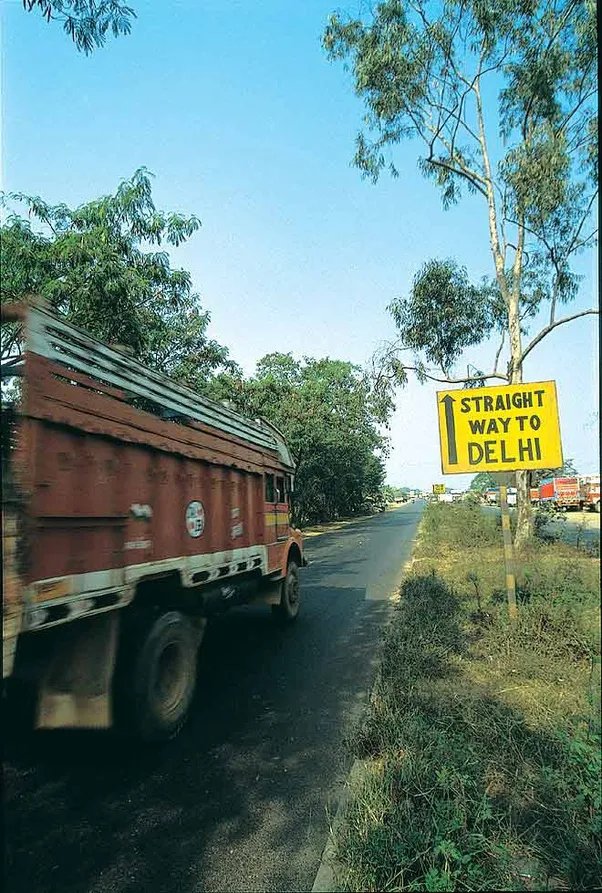
Along the way, you can stop to savor local delicacies—whether it’s the famous Agra petha or the savory street foods of Mathura and Faridabad. As you approach Delhi, the ancient meets the modern, with historical landmarks giving way to the sprawling metropolis that serves as the political and cultural heart of India.
Pitstops on the Journey from Agra to Delhi
1. Mathura
Mathura, revered as the birthplace of Lord Krishna, is a city steeped in spiritual significance and ancient history. Located approximately 60 kilometers from Agra, this sacred city offers a serene respite with its numerous temples and ghats along the Yamuna River.
- Shri Krishna Janmabhoomi Temple: Visit the exact spot believed to be the birthplace of Lord Krishna, featuring intricate carvings and a peaceful ambiance ideal for reflection.
- Vishram Ghat: Take a boat ride along the Yamuna River and witness the evening aarti, a mesmerizing ritual of light and devotion.
- Mathura Museum: Explore a rich collection of ancient sculptures, coins, and artifacts that showcase the region’s historical and artistic heritage.
2. Vrindavan
Just a short drive from Mathura, Vrindavan is another holy city closely associated with the life of Lord Krishna. Known for its numerous temples and ashrams, Vrindavan exudes a spiritual charm that attracts devotees and tourists alike.
- Banke Bihari Temple: Experience the vibrant devotional atmosphere at one of the most famous temples dedicated to Lord Krishna.
- Prem Mandir: Marvel at the stunning architecture and intricate marble carvings depicting various phases of Krishna’s life.
- ISKCON Temple: Enjoy the serene environment and participate in the soulful chanting and meditation sessions.
3. Palwal
Located about 60 kilometers from Delhi, Palwal holds historical significance as the site associated with Mahatma Gandhi’s first arrest during the freedom struggle. Though a lesser-known destination, it offers insights into India’s rich history.
- Gandhi Seva Ashram: Visit this ashram to learn about Gandhi’s philosophies and the role Palwal played in India’s independence movement.
- Panchwati Temple: Explore this beautiful temple complex surrounded by lush gardens, providing a tranquil stopover before reaching Delhi.
Delhi – The nexus of India’s culture and commerce
Arriving in Delhi, you enter a city that seamlessly blends ancient history with modern dynamism. As the capital of several empires over millennia, Delhi stands as a testament to India’s diverse cultural and historical legacy. The Grand Trunk Road India has been instrumental in establishing Delhi as a pivotal center for trade, politics, and culture, connecting it seamlessly to various parts of the Indian subcontinent and beyond.
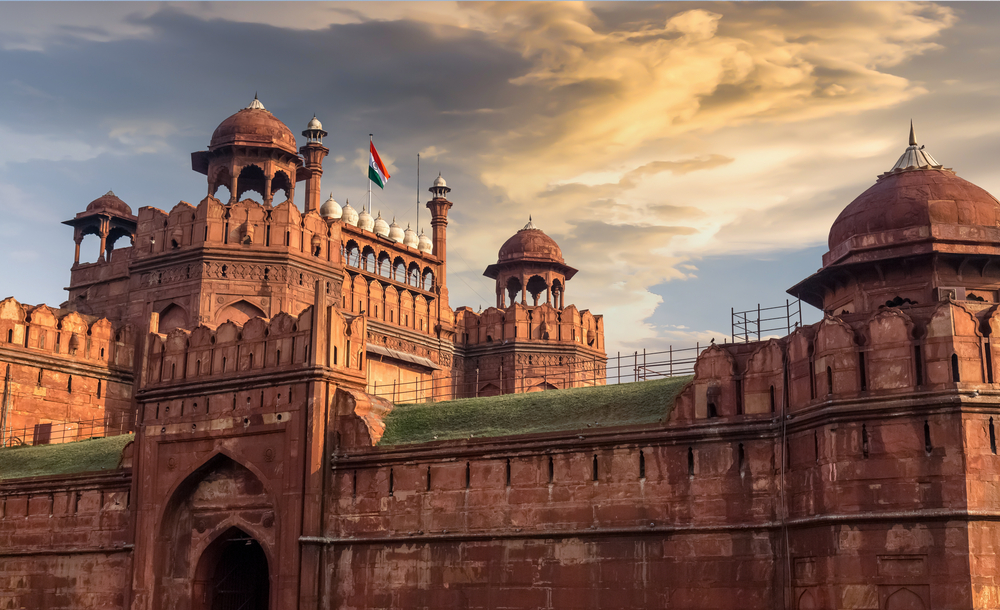
Historical significance of Delhi along the Grand Trunk Road India
Delhi’s strategic location along the Grand Trunk Road India made it one of the most significant cities in the Indian subcontinent, serving as a political, cultural, and economic hub for several empires, particularly the Mughals. As the capital of various empires, including the Delhi Sultanate and the Mughal Empire, Delhi’s position along the GT Road ensured easy access to other parts of the empire, facilitating efficient administration, military movements, and communication across vast territories. This accessibility made Delhi a central point for the consolidation of power and influence, contributing to its prominence as a major urban center.
Delhi’s rich trade heritage
Delhi was famous for its luxurious textiles, particularly silk and brocade fabrics. The city’s weavers and artisans produced intricate designs that were highly sought after in Persia, Central Asia, and Europe. These textiles were coveted by royalty and the elite, establishing Delhi as a major player in the global textile trade.
In addition to textiles, Delhi was a significant center for the production of gold and silver jewelry, often adorned with precious and semi-precious stones. The city’s jewelry was in high demand among traders from the Middle East, Central Asia, and beyond, further enhancing Delhi’s reputation in the global trade network.
The city’s markets were also famous for their variety of spices, including saffron. These spices were integral to the spice trade routes that connected India with the Middle East and Europe, making Delhi a vital link in this lucrative network.
Moreover, Delhi was famous for its handwoven carpets and rugs, which were exported to Persia and Central Asia. The intricate designs and high quality of these carpets made them valuable trade items, contributing to Delhi’s economic prosperity.
As a cultural and intellectual hub, Delhi was also known for its production of scholarly texts and manuscripts, particularly in Persian and Arabic. These manuscripts were traded with scholars and educational institutions across the Islamic world, further cementing Delhi’s status as a center of learning and culture.
In the realm of craftsmanship, Delhi was renowned for its production of weapons and armor. Swords, daggers, and other weaponry made in Delhi were highly regarded and traded with other regions, particularly in Central Asia and the Middle East.
Immersive experiences in Delhi – Exploring traditional crafts and heritage
For those looking to experience Delhi’s rich heritage of craftsmanship and trade firsthand, here are some key places to visit:
1. Textile Treasures in Chandni Chowk
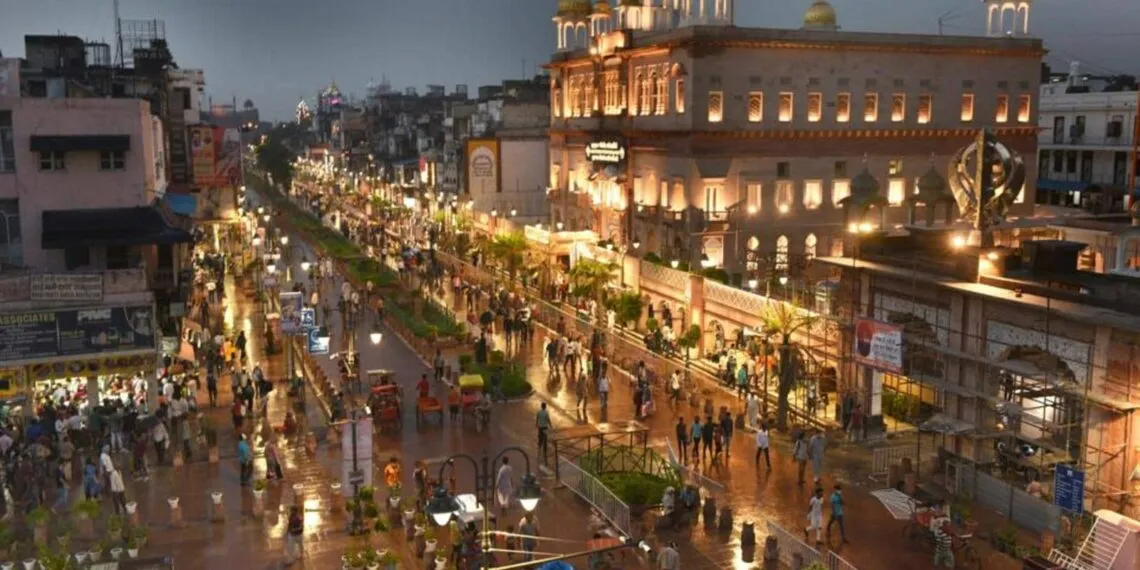
Chandni Chowk, one of Delhi’s oldest and most bustling markets, offers a glimpse into the city’s storied past as a center for luxurious textiles. Here, you can find a wide range of silk and brocade fabrics, just as traders and royalty did centuries ago.
2. Jewelry and Spices in Dariba Kalan
Dariba Kalan, located near Chandni Chowk, is famous for its jewelry shops, where you can find intricate gold and silver pieces embellished with precious stones. This market has been a hub for jewelry trading for centuries and continues to attract those seeking high-quality craftsmanship. Nearby, you can explore the spice markets, where the scents of saffron, cardamom, and other spices fill the air, offering a sensory experience that harkens back to Delhi’s days as a key player in the spice trade.
3. Attars and Perfumes in Khari Baoli
Khari Baoli, Asia’s largest spice market, is also known for its range of attars and natural perfumes. This market is the perfect place to explore Delhi’s traditional perfume-making industry, with vendors offering a variety of aromatic oils made from flowers and herbs.
4. Carpet and Rug Shops in Hauz Khas Village
For a taste of Delhi’s handwoven carpets and rugs, visit the shops in Hauz Khas Village. This area, known for its blend of historical and contemporary influences, offers a selection of intricately designed carpets that reflect the city’s rich tradition of craftsmanship. You can also go to Delhi Chor Bazaar to find affordable carpets and rugs.
5. Weaponry and Craftsmanship in Dilli Haat
Dilli Haat, an open-air market that showcases traditional crafts from across India, is a great place to explore Delhi’s history of weaponry and craftsmanship. Here, you can find replicas of swords, daggers, and other weapons that were once made in Delhi and traded across the Mughal Empire.
Delhi to Amritsar – A journey through Mughal relics and historical landmarks
Distance: 465.5 km
Time taken: 7 hr 47 min
As you travel from Delhi to Amritsar along the Grand Trunk Road India, the journey offers a fascinating glimpse into India’s rich history. About 94 kilometers from Delhi, you’ll notice a kos-minar clinging to the right-hand side of the road, standing tall at about 15-20 feet. A kos-minar is essentially a medieval milestone, where a ‘kos’ is approximately 3 kilometers and ‘minar’ refers to a pillar. These structures served as markers during the Mughal era, guiding travelers along the route. Sadly, many kos-minars have been neglected over time, with some even being demolished during road expansions.
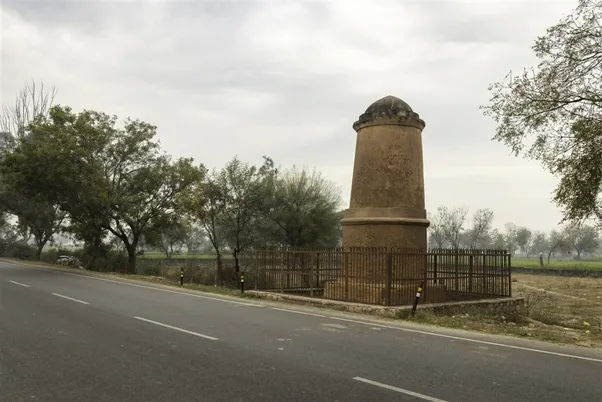
The once markers of the road now serve to remind us of just how ancient this road truly it.
Further along, around 120 kilometers from Delhi, you’ll reach Gharaunda, where the remnants of an old sarai (traveler’s inn) come into view. This sarai, built in 1632 during the reign of Shah Jahan by Khan Feroze, was once a grand resting place for travelers. Although the town has since grown around it, and only the two massive gateways remain—one in ruins and the other still showcasing the majestic arches and central dome that reflect Mughal grandeur.
Pitstops between Delhi and Amritsar
As you travel from Delhi to Amritsar along the Grand Trunk Road India, there are several historically and culturally significant stops worth exploring:
1. Kurukshetra
Known as the battleground of the Mahabharata, Kurukshetra is a site of immense historical and religious importance. The town has many temples, museums, and lakes that commemorate its role in Hindu mythology. A visit to the Brahma Sarovar and the Kurukshetra Panorama and Science Centre provides a deep dive into the epic history and cultural significance of the region.
2. Karnal
Karnal, often referred to as the “Rice Bowl of India,” is famous for its agricultural prowess. The town is also famous for its connection to Raja Karna of the Mahabharata. Visitors can explore the Karnal Lake, a popular tourist spot, and the historic Kalandar Shah’s Tomb, which offers insights into the town’s rich past.
3. Ambala
Ambala serves as a significant junction on the Grand Trunk Road India, known for its twin cities—Ambala Cantonment and Ambala City. The cantonment area has a strong military presence, while the city is famous for its bustling cloth market, one of the largest in the region. The city also has religious sites like the Ambika Devi Temple, adding to its cultural charm.
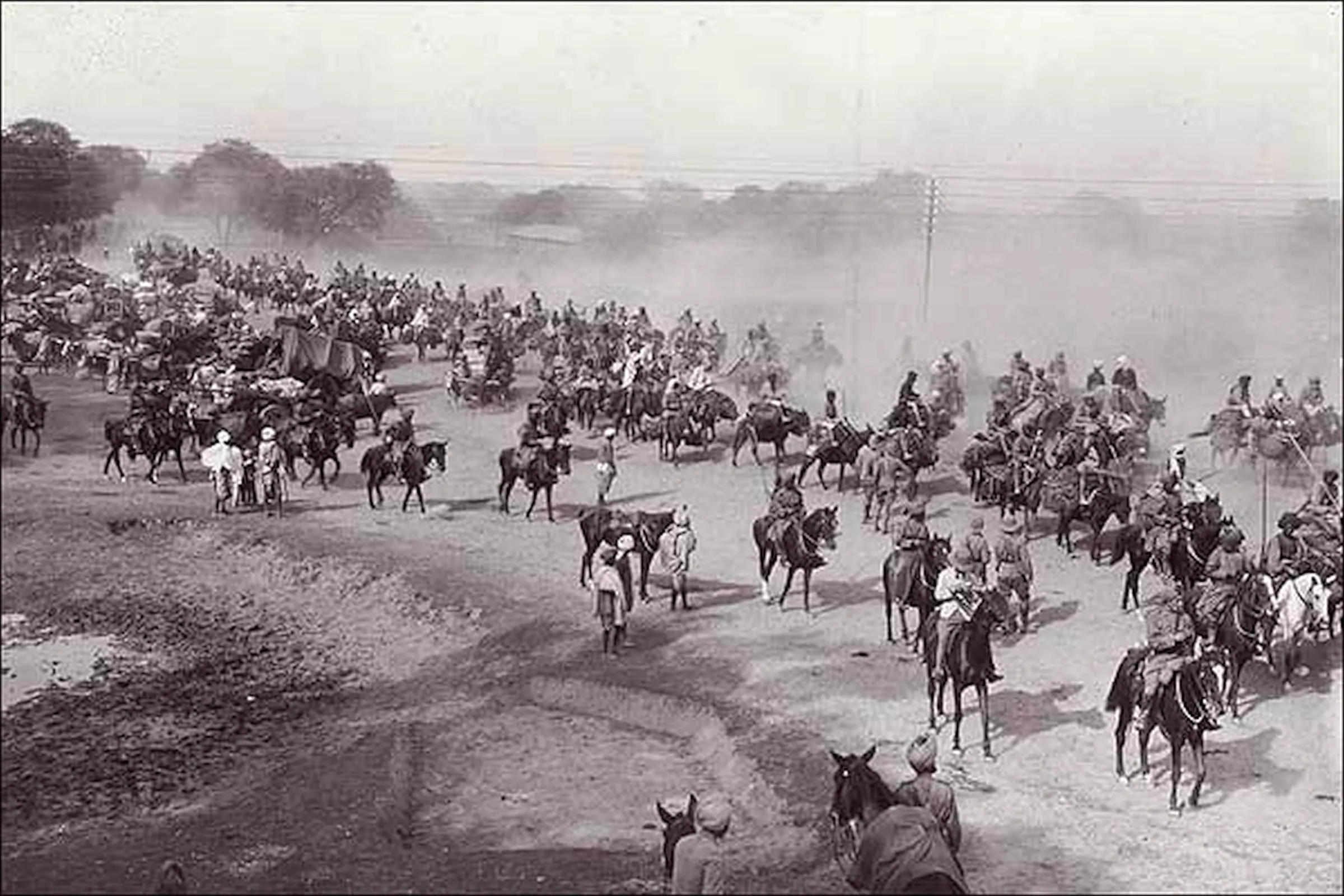
4. Ludhiana
Ludhiana is Punjab’s largest city and a major industrial hub, known for its textile and garment industries. The city offers a mix of modern and traditional attractions, including the Punjab Agricultural University Museum, which provides a glimpse into the region’s agricultural heritage. Ludhiana’s bustling markets, such as Ghumar Mandi, are also worth a visit for shopping enthusiasts.
Amritsar – The final stop on the Grand Trunk Road India
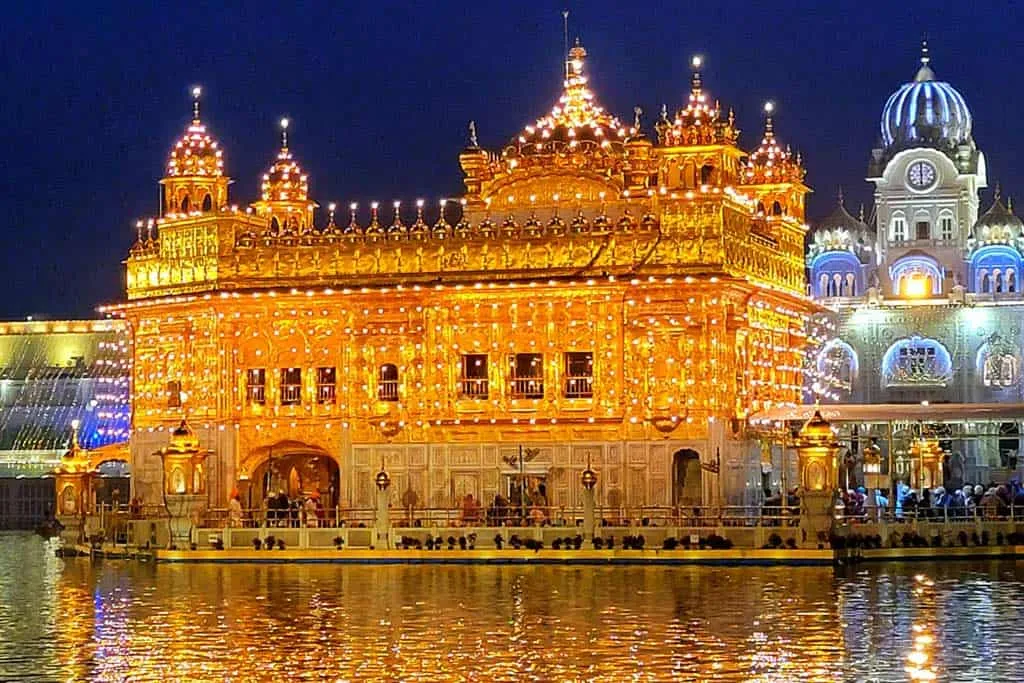
Amritsar, the second-largest city in the Indian state of Punjab after Ludhiana, is the final stop on the Grand Trunk Road (GT Road) before it crosses into Pakistan. A major cultural, transportation, and economic center, Amritsar is famous for the Golden Temple, a spiritual and architectural marvel that attracts millions of devotees and tourists each year.
Economic growth and the Golden Temple
As Amritsar became more accessible via the GT Road, the city experienced significant economic growth. The prosperity brought about by trade and the movement of goods along this vital route played a crucial role in generating the resources needed for the ongoing construction, maintenance, and beautification of the Golden Temple. Contributions from devotees and wealthy Sikh patrons, many of whom traveled via the GT Road, were instrumental in funding the temple’s construction. Additionally, the GT Road enabled the sourcing of skilled craftsmen and materials from other parts of India, indirectly supporting the construction and decoration efforts of this iconic religious site.
Strategic importance during the Mughal Empire
During the Mughal Empire and throughout history, Amritsar held immense strategic significance due to its location along the Grand Trunk Road. Positioned near Lahore, a key Mughal city often regarded as the “Paris of the Mughal Empire,” Amritsar served as a crucial gateway between Lahore and the broader Mughal territories, including Delhi and Agra. The GT Road facilitated the movement of Mughal armies, officials, and resources through Amritsar, particularly during campaigns in the northwestern regions. This connectivity ensured that Amritsar remained a vital link in the empire’s communication and transportation network.
Agricultural prosperity and trade
The fertile plains surrounding Amritsar contributed significantly to the Mughal Empire’s economy. The region’s surplus agricultural produce, including grains and other crops, was transported via the GT Road to urban centers where there was a high demand for such goods. The road’s efficient transportation network ensured that Amritsar’s agricultural wealth could be shared with other parts of the empire, further cementing the city’s role as a key economic hub in northern India.
Amritsar’s role during British Rule
Amritsar’s relevance along the Grand Trunk Road continued to evolve during British rule, becoming a vital military and administrative center. The city’s strategic location made it a key outpost, particularly due to its proximity to the northwestern frontier and the volatile border with Afghanistan. The GT Road was crucial for moving troops and supplies, especially during periods of unrest, such as the Anglo-Afghan Wars. The fertile lands around Amritsar continued to be a major source of agricultural produce, including grains, spices, and cotton, which were transported along the GT Road to ports for export, integrating Amritsar into the global economy.
One of the most infamous events in Indian history, the Jallianwala Bagh Massacre, took place in Amritsar. The city’s role as a center of political activity and resistance against British rule was heightened by its location along the GT Road, which made it accessible to both the British military and Indian nationalist leaders. The massacre galvanized the Indian independence movement, with Amritsar becoming a symbol of resistance.
Trade and commerce with international impact
The GT Road served as the primary artery for transporting Amritsar’s renowned goods, such as Phulkari embroidery, to markets far beyond the borders of India. This traditional Punjabi craft, characterized by its vibrant and intricate patterns, was highly valued not only within India but also in regions like Central Asia and the Middle East. The road’s extensive network made it possible for traders to easily transport these luxurious textiles to distant lands, where they were sought after as high-end luxury items.
In addition to textiles, Amritsar was also famous for producing high-quality woolen shawls, which were particularly in demand in colder regions, including Central Asia and Europe. The GT Road facilitated the movement of these finely crafted shawls from Amritsar to trading hubs across the subcontinent and beyond. Traders from these colder regions relied on the GT Road’s connectivity to access Amritsar’s markets, ensuring that the city’s woolen shawls became staple goods in their own markets.
Amritsar’s agricultural wealth was another key element of its economic prosperity, and the Grand Trunk Road was instrumental in moving this produce to wider markets. Situated in one of India’s most fertile agricultural regions, often referred to as the “Granary of India,” Amritsar produced an abundance of wheat and other grains. The GT Road enabled the efficient transport of these agricultural products to major urban centers across India and to neighboring countries where there was a high demand for food supplies. The road’s connectivity ensured that Amritsar’s surplus produce reached regions that lacked similar agricultural output, further solidifying the city’s role as a critical supplier within the Mughal Empire and later during British rule.
Immersive experiences in Amritsar – Exploring traditional crafts and heritage
To truly immerse yourself in Amritsar’s rich history of trade and craftsmanship, consider visiting the following places:
1. Phulkari Embroidery
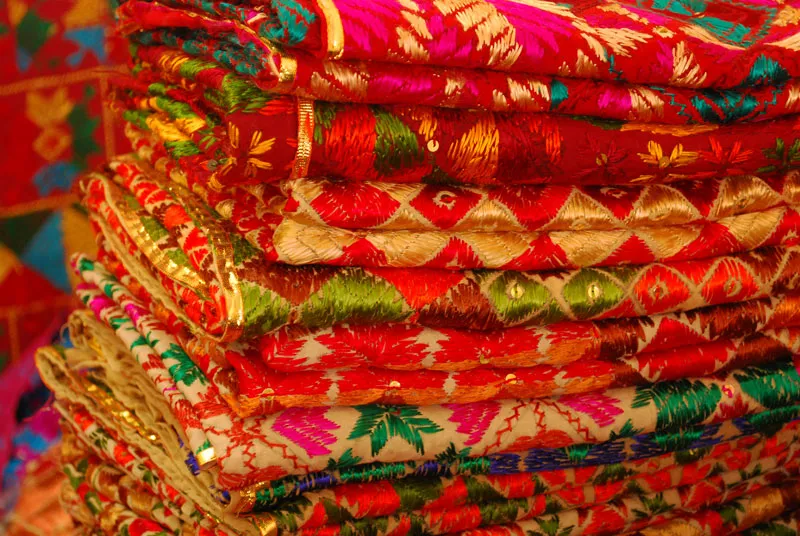
Explore the markets in Amritsar, like Hall Bazaar and Katra Jaimal Singh, where you’ll find authentic Phulkari textiles. Skilled artisans hand-embroider these vibrant fabrics, showcasing the city’s enduring craft traditions, and making them highly prized by both locals and tourists.
2. Woolen Shawl Crafting
For a hands-on experience of woolen shawl making, visit the local workshops in the Ranjit Avenue area or around the famous Lahori Gate Market. Watch artisans as they craft intricate designs into high-quality shawls using traditional methods passed down through generations. Some workshops even demonstrate the weaving process or let you try your hand at it.
3. Farmhouse Experience
To experience the agricultural richness of Amritsar firsthand, consider staying at one of the farm stays around the city. Places like Punjabiyat near Gurdaspur, or Virasat Haveli in Amritsar, offer a unique opportunity to experience rural Punjabi life. These farm stays provide a glimpse into the region’s farming practices, including the cultivation of wheat and other grains that have historically contributed to Amritsar’s prosperity. Guests can participate in farming activities, enjoy traditional Punjabi cuisine, and relax in the serene countryside, all while experiencing the vibrant culture of Punjab.
Things to Keep in Mind Before Your Grand Trunk Road Trip in India
While the idea of a road trip along the Grand Trunk Road is undeniably exciting, it’s important to recognize that this journey traverses a variety of landscapes, each presenting its own unique challenges and experiences. According to our experienced Savaari drivers, here are some essential things you should know before setting out on this epic journey.
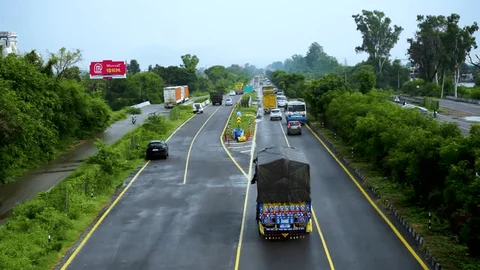
Plan your pitstops
Embarking on a journey along the Grand Trunk Road (GT Road) in India is a true adventure that spans an impressive 2,295 kilometers. Given the length of the journey, it’s crucial to plan your pitstops with care, ensuring you choose locations with good accommodations.
Scenic beauty vs. rural experience
For those seeking scenic beauty, the stretch through West Bengal offers a picturesque journey, where you can exchange the hustle of dhabas and petrol pumps for serene landscapes. However, if you’re curious about rural India’s travel habits, the 355-kilometer stretch between Delhi and Kannauj offers a glimpse, though it comes with the trade-off of sometimes clocking no more than 15 km/h and the risk of encountering road hazards.
Challenging sections – Durgapur-Asansol
In the Durgapur-Asansol section, be ready for scant road safety, with trailers carrying oversized loads and upturned trucks often blocking the way due to the lack of highway patrols. This area is notorious for its chaotic road conditions, with vehicles of all types flaunting safety norms.
Fuel stops and refueling tips
Fuel stations selling high-speed diesel are scarce until you reach Haryana and Punjab, so plan your refueling stops accordingly. It’s advisable to fill up outside towns and cities to avoid overcrowded pumps and save time.
Congestion in urban areas
As you approach the entry and exit points of towns like Mughalsarai and Kanpur, be ready for congestion. These areas often turn into traffic bottlenecks, lined with repair shops, filling stations, and a seemingly endless line of trucks, making the drive slow and tiring.
Navigating Delhi’s periphery
Reaching the heart of Delhi from its outskirts can be a challenge, with ongoing construction causing diversions and traffic jams that test your patience.
Night travel considerations
For night travelers, note that most cities in North India lack street lighting after dark, so it’s wise to reach your destination before sunset. Signposts along the road are rare in West Bengal, sporadic in Jharkhand and Bihar, and more frequent in Uttar Pradesh, Haryana, and Punjab. This makes navigation tricky, so having a GPS or detailed map can be helpful.
Service stations and dhabas
You’ll usually find service stations near the entry and exit points of towns and cities, while smaller, unauthorized shops handle minor repairs around urban areas and dhabas. Dhabas are scarce in West Bengal, nonexistent in the forested areas of Jharkhand, but become more frequent as you travel through Bihar and beyond into Uttar Pradesh. Unfortunately, neglect has caused the deterioration of many kos-minars over time, and road expansions have led to the demolition of some.
The journey is the destination
This journey on the GT Road is as much about the experience as it is about the destination, offering a unique view of India’s landscape, culture, and history. With the right preparation, it can be an unforgettable adventure.
Rediscover heritage on the Grand Trunk Road India with Savaari
Embarking on a road trip along the Grand Trunk Road India offers a unique opportunity to delve into the rich history and explore the diverse wonders that have shaped the Indian subcontinent. From the bustling markets of Delhi to the spiritual serenity of Bodh Gaya, and from the vibrant cultural heritage of Amritsar to the iconic landmarks of Agra, this journey takes you through centuries of grandeur and cultural fusion. Each stop along the way reveals a new chapter in the story of India, offering travelers an immersive experience that is both educational and inspiring.
To truly make the most of this journey, consider booking with the Savaari app, which provides the convenience of a chauffeur-driven car. With a knowledgeable driver at the helm, you can sit back and enjoy the ride, taking in the sights and sounds of this historic route without the worry of navigating the roads yourself. Savaari’s experienced chauffeurs not only ensure a smooth and comfortable journey but also enhance your experience by sharing local insights and hidden gems that you might otherwise miss. Whether you’re a history buff, a culture enthusiast, or simply someone looking for a memorable adventure, this road trip along the Grand Trunk Road India is a journey like no other.
Last Updated on October 26, 2024 by V Subhadra




